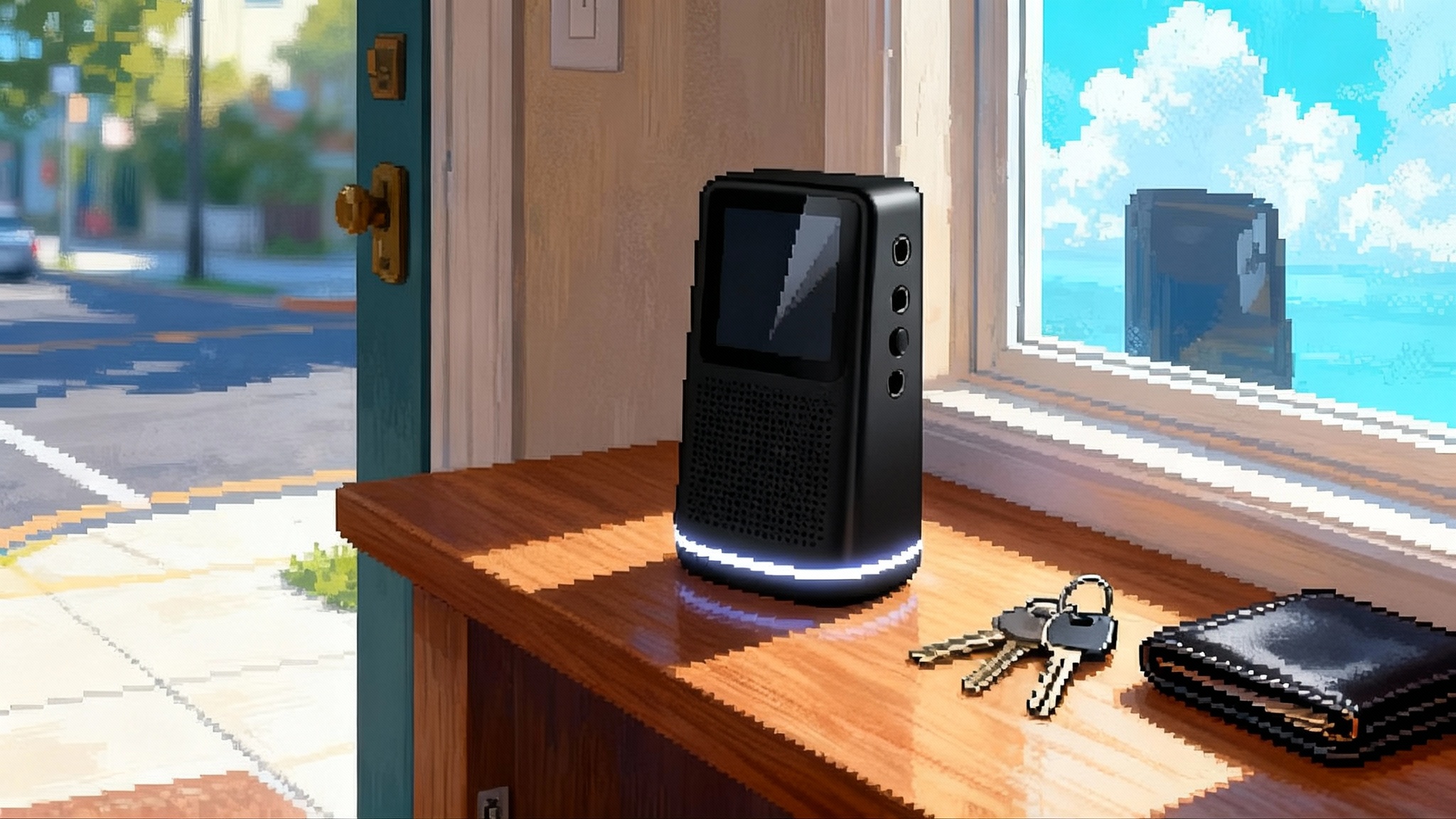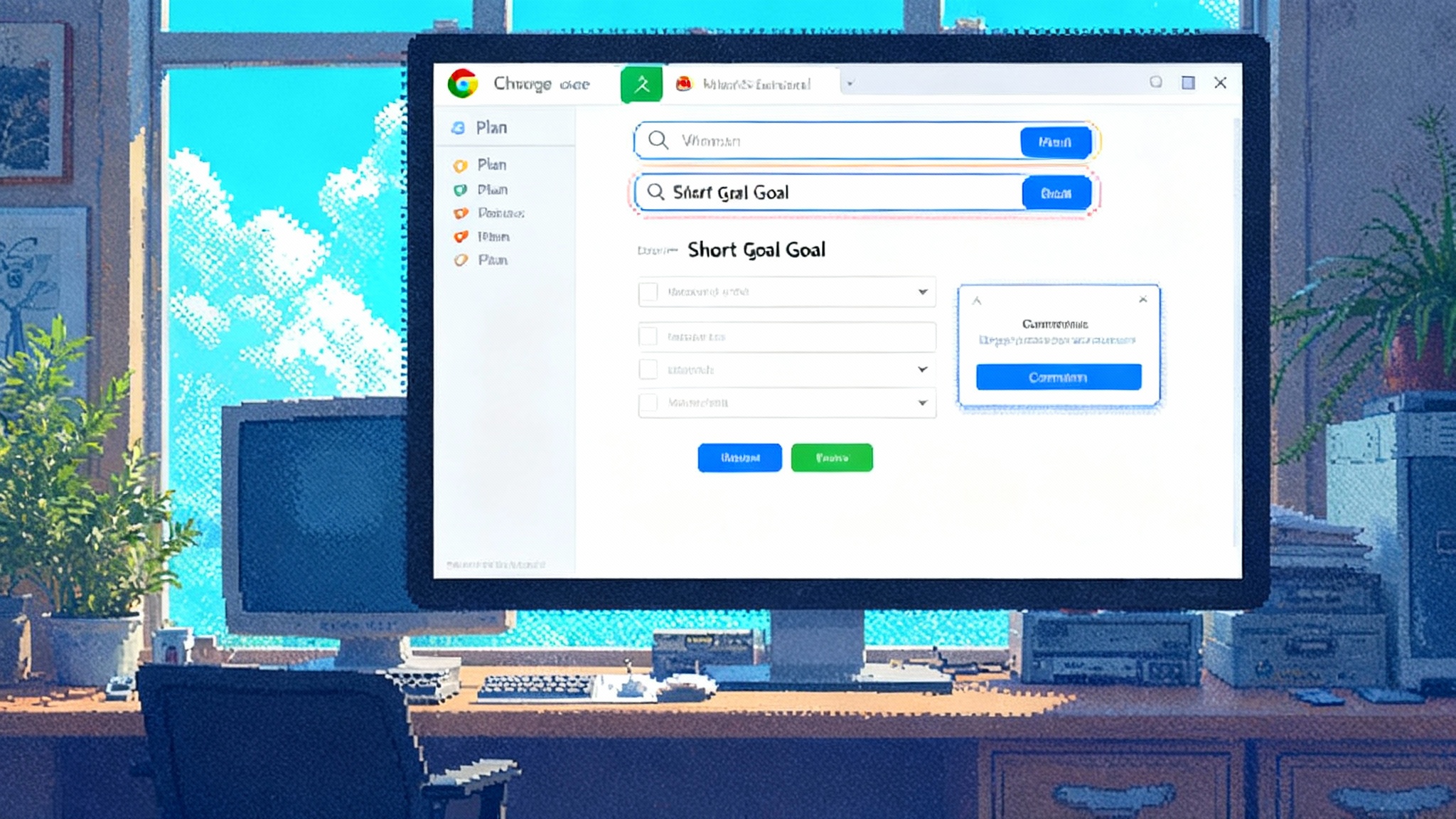OpenAI’s pocket agent leaves the browser for real life
Reuters says OpenAI tapped Apple supplier Luxshare to build a pocket-sized device for a continuously acting ChatGPT agent. Here is how design, safety, and supply chains could shape ambient AI's first hit.

The pocket moment for agents
On September 19, 2025, Reuters reported that OpenAI signed with Luxshare, a major Apple supplier, to manufacture a pocket-sized, context-aware device intended to run an AI agent around the clock. The report frames OpenAI’s most serious hardware push since bringing Jony Ive’s team closer earlier this year, positioning the company to control both software and device for the first time. If that holds, it marks a line in the sand: agents are stepping out of the browser and into the world. See how Reuters details Luxshare partnership.
Browser-based agents have already accelerated, from Chrome experiments to OS-level hooks, as seen in Chrome goes agentic with Gemini and how Gemini makes agentic browsing mainstream. A dedicated pocket device is the next test: can an agent feel reliable and respectful when it lives with you, not just in a tab.
The stack: Ive’s brief and Luxshare’s scale
Design priorities
Jony Ive’s lineage is about resolving contradictions: simple objects that hide complex systems, tactile clarity that masks constraints. A pocket agent must be glanceable, private, and socially acceptable. That points to small, durable, weather resistant hardware with a single glanceable display or light field, haptics that communicate state, and a microphone array tuned for near-field speech in noise. The device must make it obvious when it is listening and when it is not.
Manufacturing realities
Luxshare lives where vision meets yield. It assembles iPhones and AirPods at scale, which matters because agents are unforgiving about component tolerance. Beamforming mics need consistent placement, antenna performance sinks if materials drift, and thermals get tight when on-device inference meets bursty radios. The supplier relationship will determine whether OpenAI can pursue custom modules, such as a low power neural coprocessor, rather than only shopping from an off-the-shelf bin.
A realistic module map
- A low power application processor plus a neural accelerator for wake word, noise suppression, local intent, and a narrow band of local generation.
- A secure enclave for biometric or voice profile material, and a physical privacy switch that hard-disconnects microphones and any camera.
- Ultra wideband or Bluetooth LE for a personal mesh across phone, laptop, earbuds, car, and home devices.
- Environmental sensors, from barometer to ambient light, chosen for real utility and power budget.
The stack will be judged on the invisible: how quickly the agent wakes, how often it gets context right, how rarely the user repeats themselves, and how clearly the device signals its state to people nearby.
What an ambient agent should actually do
An ambient agent is not a tiny phone and not a second screen. It is a stateful process that interprets moments and brokers action across your digital life.
- Calendar triage that respects location and energy. If you are running late, it renegotiates the first meeting and alerts the second. If you arrive early, it moves prep to now.
- Inbox digestion with context. A school closure email adjusts your afternoon drive, nudges the car to leave earlier, and pings the other parent.
- Live translation and memory aids in motion. Conversations across languages in a coffee line, names recalled at the door, quick summaries before a callback.
- Small purchases on rails. Reorders for staples, tickets for recurring routes, and parking payments, all subject to user-defined caps and confirmations.
Default to asking before acting when money, messages, or movements are at stake. Over time, as the model learns your preferences and proves reliability, you can relax those prompts.
Safety and the social contract
Safety is the behavioral contract the device keeps with you and with people nearby who did not opt in.
- Knowable state. Hardware indicators for microphones and camera must be truthful, unspoofable, and visible. A physical mute switch that electrically isolates sensors is table stakes.
- Data minimization. Perform wake word detection and basic intent parsing locally and discard non matches. When audio or imagery goes to the cloud, keep it tightly bounded to the active request.
- Friction where it matters. Money moves, messages to new contacts, and account access should require explicit confirmation, ideally with a second factor on a trusted phone.
- Abuse resistance. Withstand prompt injection from rogue QR codes, overlays, or malicious web content. Restrict which tools the agent can invoke without confirmation and scan web results in real time for policy violations.
Lessons from Humane and Rabbit
The 2024 wave of agent devices offered free research and hard feedback.
- Latency is a feature. Seconds of delay turn magic into doubt. A pocket agent needs sub 200 millisecond round trips for wake, listen, confirm.
- Battery and heat are brutal. Always-listening systems will die early without aggressive silicon power states, sparse sampling, and smart burst scheduling.
- Displays still matter. Voice first is not voice only. A glanceable display calms social friction and confirms actions. The right haptics can do half this job without eyes.
- Apps versus actions. Users want outcomes, not app galleries. A skills model that maps to verbs with clear scopes and caps beats a list of brand names.
- Trust drives retention. Over promise and under deliver in unfamiliar moments and trust erodes fast.
The agent software is already here
OpenAI’s agent has been evolving inside ChatGPT. In July 2025 the company launched a general purpose system that plans, navigates tools, and completes tasks across your apps. The browser version blends connectors, a terminal, and safety monitors, and offers a proxy for what could live on the device. See TechCrunch on agent launch.
A dedicated device shrinks the loop. Wake word, voice activity detection, and a first pass at intent can happen locally. The agent then chooses the fastest path: a local routine, a paired phone app, or the cloud.
Pressure on Apple, Google, and Samsung
- Apple has perfected rituals across phone, watch, and earbuds and has been threading more on-device intelligence into those products. A credible third party agent with bespoke hardware pushes deeper automation hooks and unified intent handling.
- Google has the right pieces in Gemini, Android, and services. The challenge is coherence. A clean agent-first UX on a non-phone device pressures Android to clarify whether intents belong to the OS, the user’s agent, or the app.
- Samsung can scale silicon and hardware fast. If OpenAI creates a new category, Samsung will answer with agent-forward accessories that pair tightly with Galaxy.
These moves build on the trend that the browser becomes an agent, but the power struggle shifts once actions escape the browser sandbox.
Timelines and what to watch
Assuming a September 2025 manufacturing engagement, a common path looks like this:
- EVT through late 2025 focusing on acoustics, radios, and thermals.
- DVT in early 2026 bringing industrial design and materials near final, with certifications starting.
- PVT by mid 2026 tuning lines, yields, and firmware alongside a visible phone companion.
- Limited launch in the second half of 2026 with constrained geographies and accessories.
Wildcards include custom silicon readiness, carrier partnerships if cellular is included, and regulatory posture in markets that treat always-listening devices differently. The biggest variable is software maturity.
Developer surfaces and the work OS
Agents reconfigure developer platforms around verbs and outcomes.
- Skills as contracts. Instead of giant apps, developers publish scoped actions with clear permissions and rate caps.
- Sensors and context APIs. Controlled access to location trends, motion, presence, and proximity with understandable privacy labels and consent prompts.
- Background execution by default. The agent schedules work when it makes sense, with small templates for confirmations and summaries when human input is needed.
- Testing with simulators. Great SDKs ship with simulators that fake microphones, radio conditions, and noisy contexts.
- A marketplace built on outcomes. Users subscribe to capabilities and pay when tasks complete successfully.
Enterprises will expect governance. See how Workday frames agent fleets under control in Workday's governed agent fleets.
Platform power if OpenAI controls both agent and device
Owning the agent and the object gives OpenAI leverage.
- Distribution. Bundle a device with a ChatGPT subscription.
- Defaults and data. Control capture, heuristics, and context summarization even with strict privacy rules.
- Policy and enforcement. Set skill permissions and safety gates at the agent layer rather than argue for OS changes.
Risks remain. Platform owners may limit deep integrations. Regulators will scrutinize tying and data flows. And every outage will be felt in a pocket, not just in a browser tab.
What success looks like
- Median task latency under one second for common flows.
- Battery life that spans a waking day.
- A real trust score that tracks correctness, privacy, and interruptions.
- A durable routine set people rely on daily that survives model updates and marketing cycles.
Pricing will balance bill of materials and compute. A low entry price coupled with a subscription aligns the business with ongoing utility, but the first job is to earn a place in the pocket.
The new ritual
If OpenAI and Luxshare ship this right, the ritual will feel quiet. You touch the device twice at the door. A haptic tells you the car will leave five minutes later because of a school detour. You whisper a change for dinner and the agent moves the reservation, asks for a high chair, and texts your guests. No spectacle, just less friction.
That is what leaving the browser means. The agent stops being a place you visit and becomes something that accompanies you. Hardware is not a detour. It is how an ambient agent becomes real, accountable, and worth bringing along.



